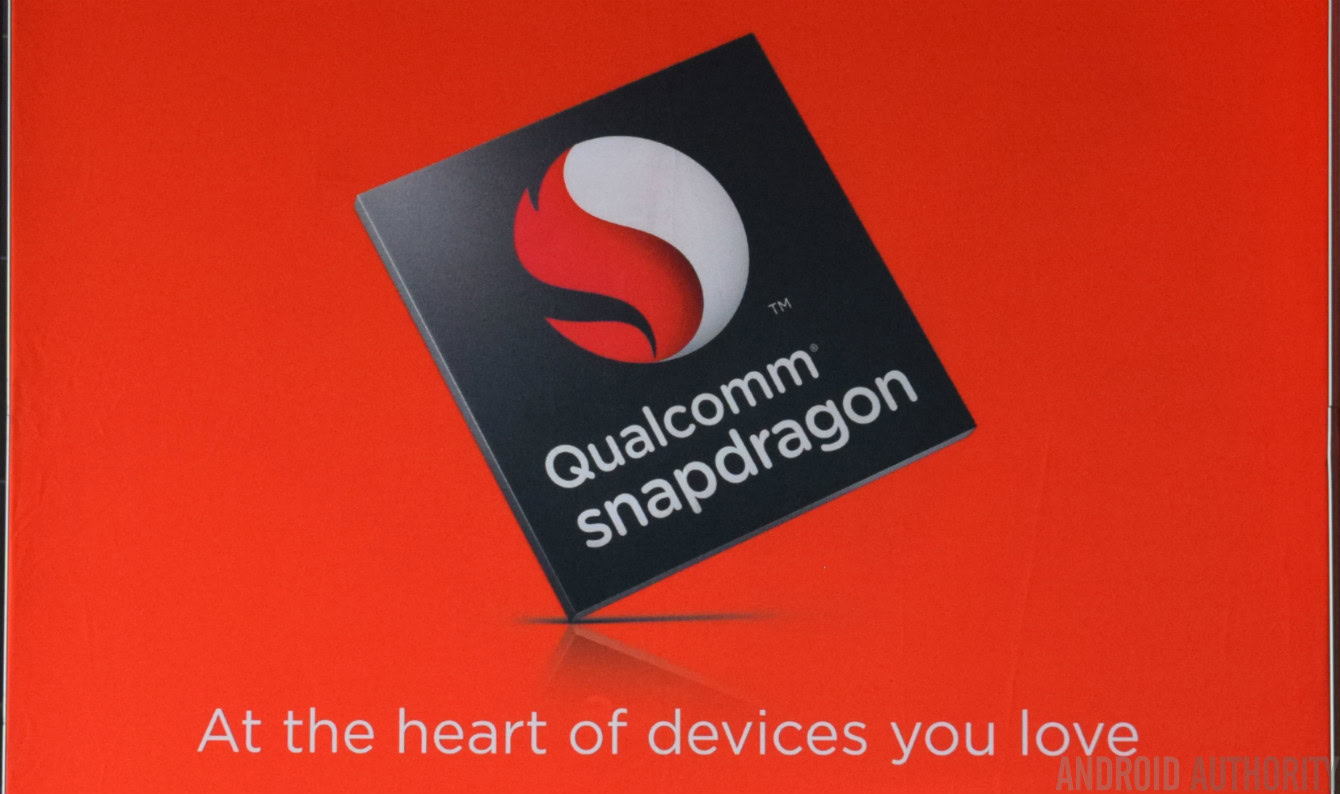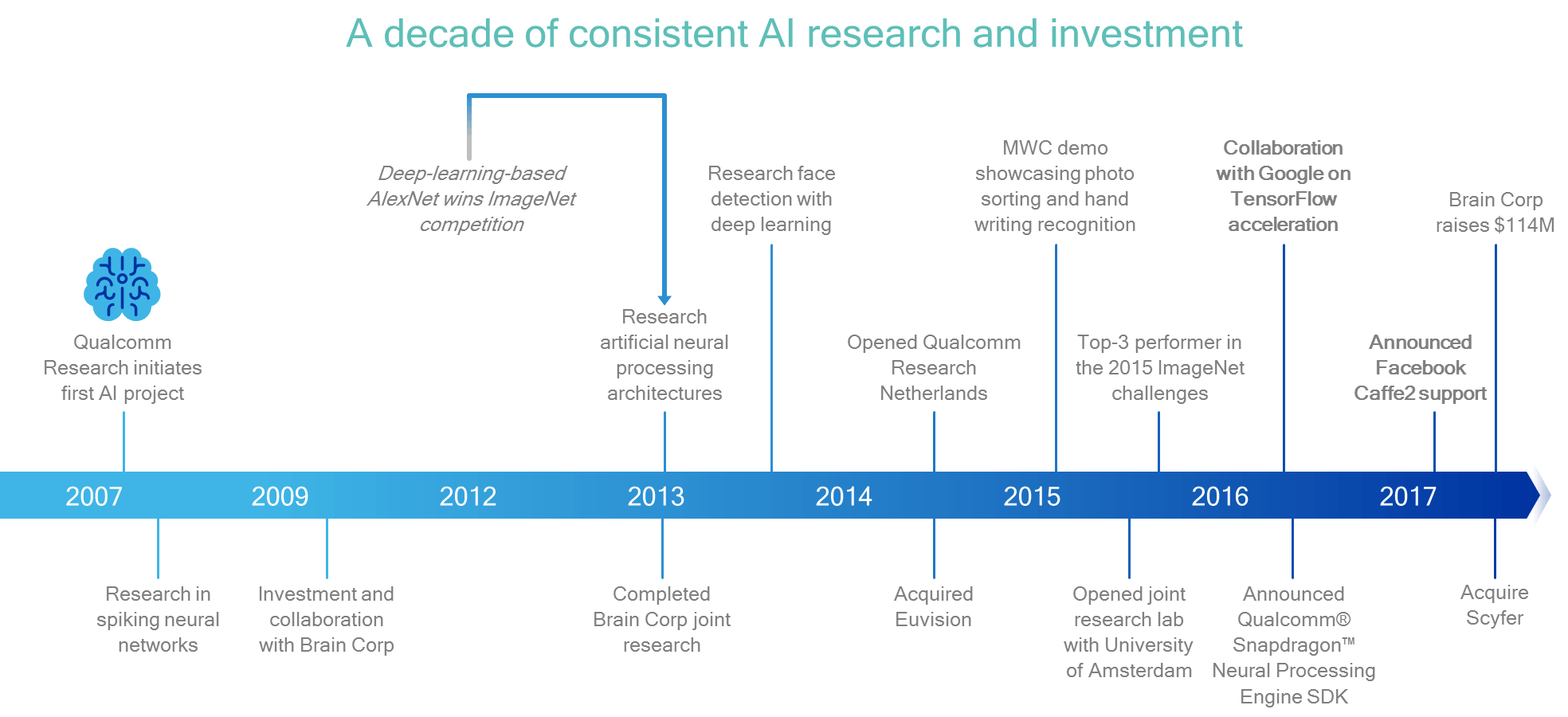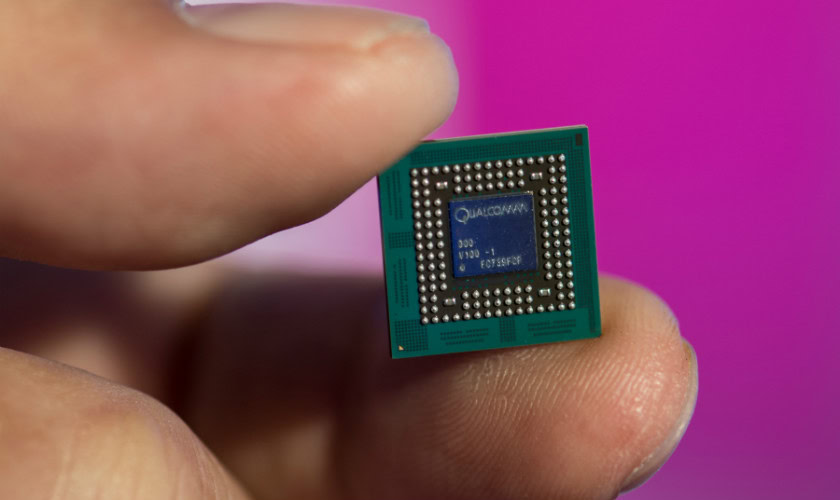Affiliate links on Android Authority may earn us a commission. Learn more.
Qualcomm officially announces the Snapdragon 845 Mobile Platform (Update: more details)
Published onDecember 5, 2017

Update (12/06): Qualcomm has finally announced all the details on the Snapdragon 845. You can learn all about them right here.
Update (12/05): Qualcomm has officially unveiled its next-generation flagship Mobile Platform, the Snapdragon 845, on stage at the company’s Technology Summit. We don’t have too many details for you right now, though we will in the near future. You can expect to see an update to this article in the next day or so with all the details you need to know.
Original article (11/09): After a year of high-end product launches powered by Qualcomm’s Snapdragon 835, we’re at that time when hardware enthusiasts are eager to see what next-generation mobile SoCs will have to offer. Although Qualcomm is naturally tight-lipped about its next flagship mobile platform, we’re pretty sure the company is gearing up to launch a new product – the Snapdragon 845.
Traditionally, Qualcomm has announced its latest high-end mobile platform at its Snapdragon Technology Summit in the closing months of the year, just in time to appear in flagship smartphone launches early next year. Our team will be in Hawaii for this year’s event in early December, where we are expecting Qualcomm to unveil the Snapdragon 845.
DynamIQ meets Kryo

This year’s major mobile processor innovations were the unveiling of ARM’s new Cortex-A75 and A55 CPUs and DynamIQ multi-core cluster technology. Not only do these CPUs improve performance and energy efficiency once again, but DynamIQ technology means that cores can now share the same CPU cluster, enabling better power management and superior heterogeneous processing.
As a cutting edge processor, the Snapdragon 845 will almost certainly adopt this latest technology from ARM. While it’s possible that Qualcomm may unveil a heavily customized CPU design using an architecture license from ARM, such a design would likely miss out on the benefit of ARM’s DynamIQ innovations. With ARM doing so much work on its latest architecture revision, it would be surprising to see a partner spend resources reinventing the wheel.
It's almost certain Qualcomm will utilize ARM's latest Cortex-A75 and A55 CPU cores, but a 7nm manufacturing process looks too ambitious.
However, we may see the Snapdragon 845 keep in-house branding for its CPU cores, possibly even sticking with the same Kryo nomenclature. Under ARM’s Built on ARM Cortex Technology license, partners are able to configure aspects of the micro-architecture design while also retaining their own naming options. This is what Qualcomm used for the Kryo 280 inside the Snapdragon 835. Under this license, Qualcomm may also make a number of its own tweaks and changes to ARM’s Cortex-A75 or A55 cores. Although these details, if applicable, are unlikely to ever be divulged.
Most likely, the Snapdragon 845 will stick with a 4+4 octa-core configuration, even though DynamIQ enables configurations like 2+6 or 3+5, in order to maximise performance and power efficiency. However, under DynamIQ these cores will now occupy the same cluster, allowing for a shared L3 cache and therefore better core coherency for more efficient multitasking.
Last year, the Snapdragon 835 was the first mobile SoC to make use of Samsung’s 10nm FinFET manufacturing process, for greater power efficiency. Although a number of foundries are working on 7nm technology, TSMC — Qualcomm’s rumored silicon partner going forward — won’t begin mass production until mid-2018. For that reason, the Snapdragon 845 is likely to remain a 10nm FinFET chip, although we may face limited supply if Qualcomm and TSMC have managed to accelerate their roadmap.

An even greater focus on Machine Learning
Machine Learning and AI are this year’s big product differentiators and Qualcomm will no doubt be providing additional capabilities to its customers with the Snapdragon 845. Qualcomm has been supporting machine learning since its Snapdragon 820, and has focused extensively on the use of heterogeneous computing across its CPU, GPU, and DSP components to run these complex algorithms. The company is likely to continue this approach given the increasing focus on AI capabilities, likely making a number of tweaks to improve performance and efficiency.
Qualcomm has supported Machine Learning for a few generations now, and we can expect some further dedicated AI and neural networking improvements this year.
Earlier in the year, Qualcomm acquired Netherlands-based machine learning startup Scyfer. Scyfer has designed AI solutions for companies in industries spanning manufacturing, healthcare and finance, suggesting that Qualcomm is looking to broaden its AI efforts outside of mobile. Even so, these extra resources and expertise will likely improve its smartphone products too.
The first guaranteed improvement here will be a new Adreno GPU, rumored to carry the Adreno 630 moniker. This will, of course, offer up improved graphics capabilities for gamers, but it will be interesting to see if Qualcomm has made any coherency, FP16 or INT8 improvements to further enable GPU compute workloads to run across the CPU and GPU. This is the approach that ARM is currently taking with its Cortex-A CPUs and Mali Bifrost GPUs.
If new Huawei and Apple SoCs are any indication, we may see Qualcomm place a larger emphasis on the capabilities of any dedicated “AI” hardware too. Qualcomm already includes a custom digital signal processor under its Hexagon brand name, which the company uses to accelerate vision processing among other things. At the very least, there will likely be an improved Hexagon DSP inside the Snapdragon 845, and the company may well have tuned the core more specifically toward machine learning and neural networking tasks this time around.

Mobile platform extras
This year, Qualcomm has partially re-branded its Snapdragon SoCs as “mobile platforms”, clearly keen to point out that there’s more to its products than just processing components. As these also house image and video signal processors, modem, security, and audio components, we can see Qualcomm’s point.
Qualcomm has already introduced its gigabit LTE X20 and 5G ready X50 modems, and either could make its way into the Snapdragon 845. This will future proof next year’s handsets against upcoming LTE network upgrades. Support for 5G so early might not be on many consumers’ minds, but with roll-outs expected in 2019 and 2020, a typical two to three year upgrade cycle means next year’s phones may well end up running on 5G networks. Including the X50 would be a welcome move.
Other potential improvements could be made to its Spectra ISP to add additional camera resolution for single or dual cameras. Some extra improvement to its Aqustic audio block— based on the company’s latest class D amplifier technology— could be on the way too. We may also possibly see support for a Quick Charge 5 standard for faster charging devices and hopefully better compatibility with the increasingly common USB Power Delivery standard. Perhaps Qualcomm will have some entirely new blocks or improvements for its new processing package too.
Is there anything that you’re particularly looking for in the Qualcomm Snapdragon 845? Sound off in the comments below.